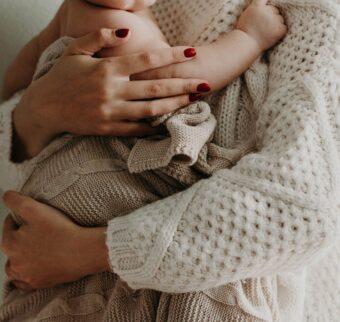Mums can pass dental decay to newborns
Study suggests new mothers should undergo regular plaque removal
Mothers with high levels of dental plaque can pass cavity-promoting yeast to their newborns and infants, a new study suggests.
The yeast, Candida albicans, is found in the mouths of many healthy babies, but it can play a role in tooth decay in early childhood — a condition known as severe early childhood caries. In addition, the fungus can cause a mouth infection in infants called oral thrush.
Because of these potential health effects, researchers investigated C. albicans in the mouths of mothers and their offspring, to see if there was a link. Their study, published in the journal PLOS ONE, suggests that mothers with a large accumulation of dental plaque are eight times more likely to pass the yeast to their infants than mothers with less plaque on their teeth.
Although babies also pick up C. albicans from other sources, not just their mothers, the study emphasises a potential link between a mother’s oral health and that of their children.
For the study, researchers took oral samples from 160 mothers and their children between 2017 and 2020. Samples were collected over the course of eight visits, which were conducted during pregnancy, at the time of birth and then up to when the child turned two years old. The scientists sequenced the genomes of organisms in the samples to identify the fungi.
In all, 93 (about 58 per cent) of the mother-child pairs had C. albicans in their samples. There were higher levels of C. albicans in children later in their lives compared with birth. Notably, 94 per cent of the mothers and children with C. albicans in their mouths carried strains that were highly genetically related, suggesting that mothers play a role in transmitting the fungi to their children.
To see how oral health factored in, the researchers used a scale to gauge how much plaque mothers had accumulated on their teeth; the scale rates plaque build-up from zero to three. They found that women who scored two or higher on the scale were eight times more likely to transfer C. albicans to their babies than those with lower scores.The researchers did not investigate exactly how the yeast transfers, but theories suggest that babies may be exposed during delivery, skin-to-skin contact or potentially while feeding. The finding suggests that mothers should consider the effects of their oral health on their children and undergo regular plaque removal, or dental scaling, from a dentist, said the authors.
In addition to plaque accumulation, the researchers looked at other ways in which babies might pick up C. albicans. The infants who tested positive for the yeast were more likely to have been fed with a bottle at night when they were two months old, while those without the fungus were more likely to have been exclusively breastfed at 12 and 18 months.
1 Multilocus sequence typing of Candida albicans oral isolates reveals high genetic relatedness of mother-child dyads in early life. Naemah Alkhars, Nisreen Al Jallad, Tong Tong Wu, Jin Xiao. PLOS One

